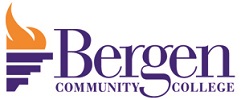Find your path to success with a diverse range of more than 120 degree, certificate, and continuing education programs.
Tips for Increased Response Rates
Below are some tips provided by SmartEvals, a company with ten years of experience in conducting effective on-line evaluations. If you have any tips to share, email [email protected].
Tip #1
Taking just five minutes of a single class to explain to students why course evaluations are important can increase the response rate for that class by 10% or more.
Tip #2
Once you receive the email alert that your evaluations are available, we recommend that you set aside five minutes at the beginning of class to speak with students about what to expect of the evaluation process. Mentioning the following items will greatly increase your student participation.
Inform students that the evaluation period has begun.
- Alert students to their Bergen email account and an email that contains a link to complete the survey(s). The heading of the email of the first of several email alerts reads, “IMPORTANT! Please evaluate your BCC courses now!”
- Remind your students that the evaluations can be completed from their home computer, tablet or smartphone.
- Provide students with specific examples of how you used feedback from past course evaluations. For example, you may say, “Last semester the evaluations said I should make better use of the course website and that is why this year I have been posting notes online.”
- Tell students that their responses are completely anonymous and that professors will see results only after student grades are submitted.
Communicating this information at the start of the evaluation period will set the stage for a strong response rate in your class.
Tip # 3
You should consider reserving a few minutes of a lab or class meeting to complete the evaluations. This is 10 minutes of class time well spent.
If your class is already taught in a computer lab, this will obviously make it easier for you to allow time to students to complete their survey as part of the class period. If the class is not taught in a computer lab, or if it is not possible to easily schedule a computer lab space, consider having students use their laptops, tablets or smartphones instead. You can also generate a QR code, that students can scan with their mobile devices using a free QR reader App.
Tip # 4
Add it to your syllabus as an assignment. By doing this, you are being proactive and letting students know that completing their course evaluation is an expected part of their course responsibilities.
Tip # 5
Share with your students some of the benefits you get as a result of their responses. Perhaps there is a class you taught in a previous term, which you changed as a result of student feedback; or perhaps there was class project you did not think had gone well but your students told you otherwise in their surveys. Providing specific examples of how student feedback made a direct impact on your course will enable students to see how valuable their feedback is to you and to them.
Tip # 6
When discussing the course evaluations, be sure to emphasize that the evaluations are completely anonymous and that all information is gathered and analyzed by an outside company called SmartEvals. Understandably, students are more apt to complete the survey if they know that their feedback is anonymous.
Tip #7
Be sure to take a few minutes of each of your classes during the evaluation period to thank your students for taking the time to complete their surveys.
Tip # 8
Remind your students that taking the time and effort to complete their surveys shows how invested they are in obtaining a quality education for themselves. It also indicates their commitment to their institution and could potentially provide them an opportunity to create positive change.
Tip # 9
If you feel comfortable, provide a small incentive. For example, you may suggest that one point of extra credit will be given to each student if the class achieves a 100% response rate to your course evaluation.
Tip # 10
The SmartEvals system is programmed to send reminders to students who have not completed their course evaluations. We suggest reminding your students that as soon as they complete their surveys, the emails will stop.
